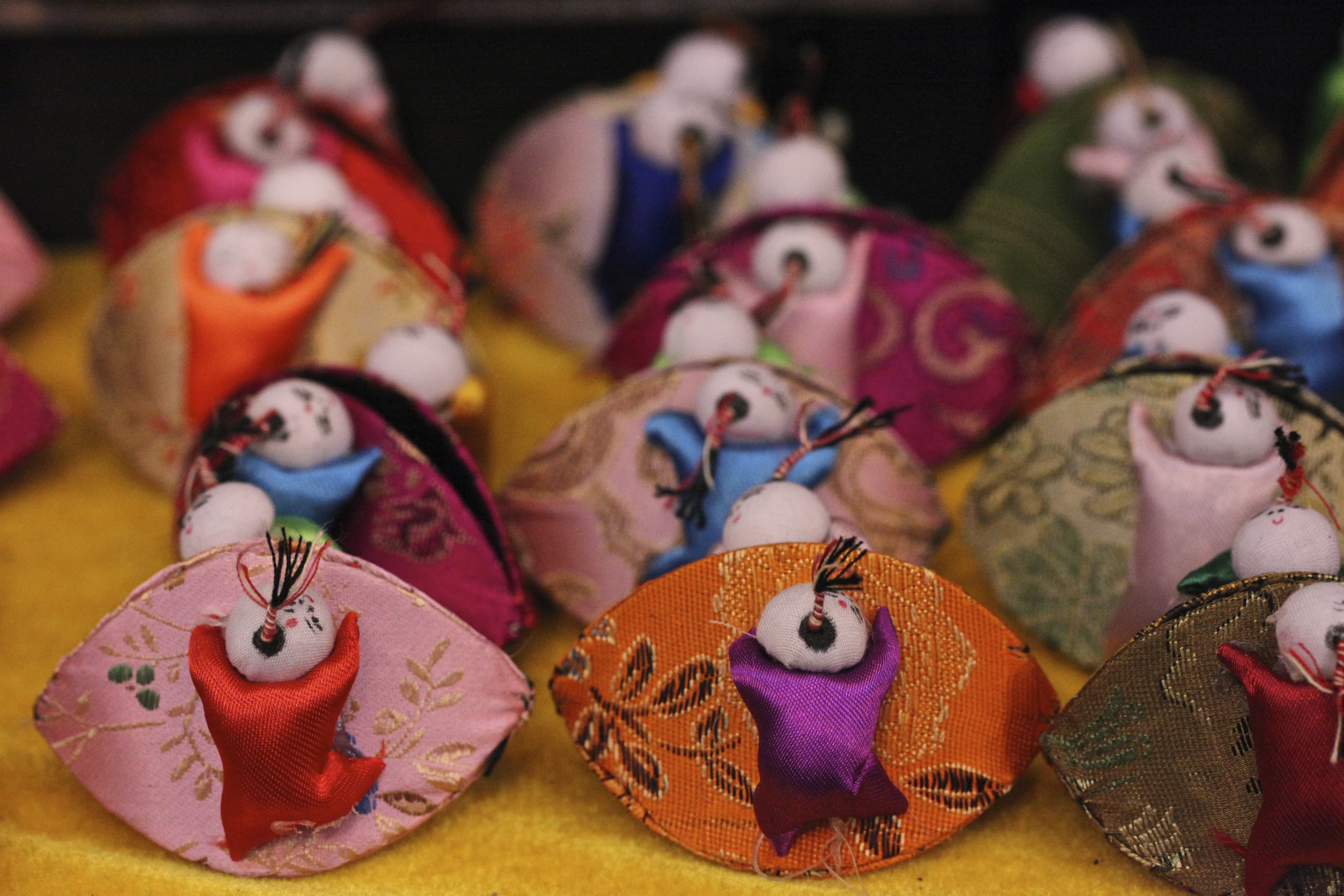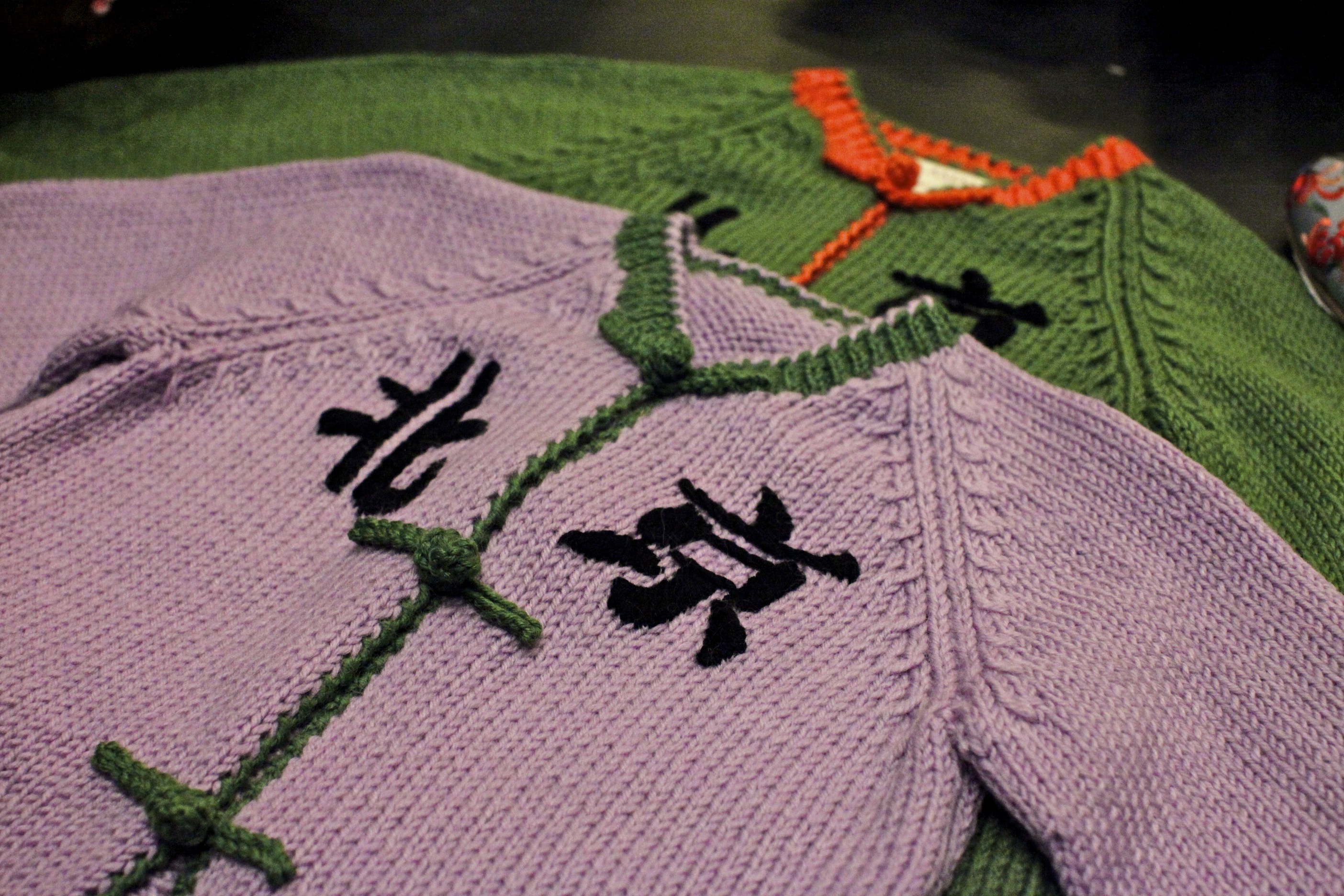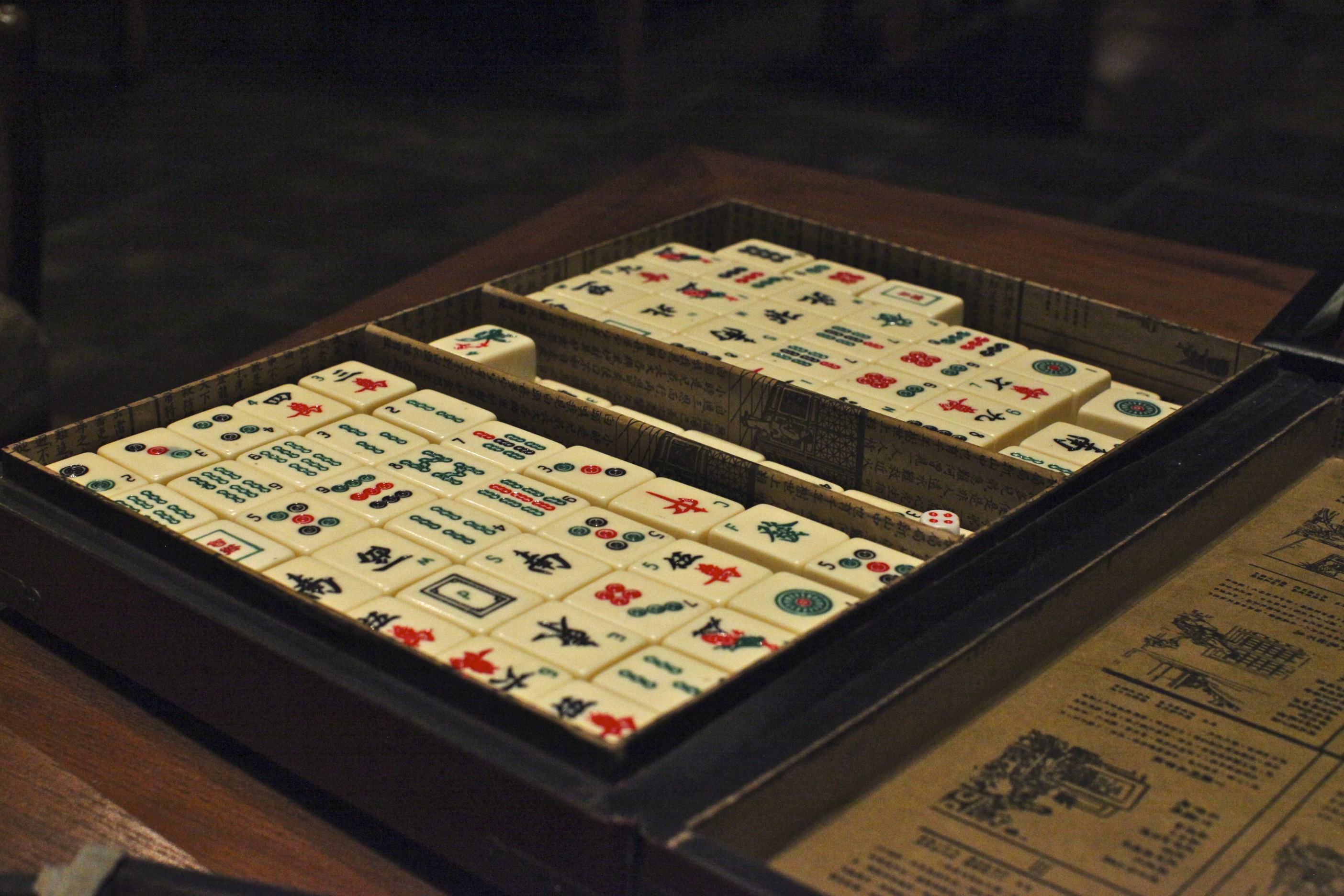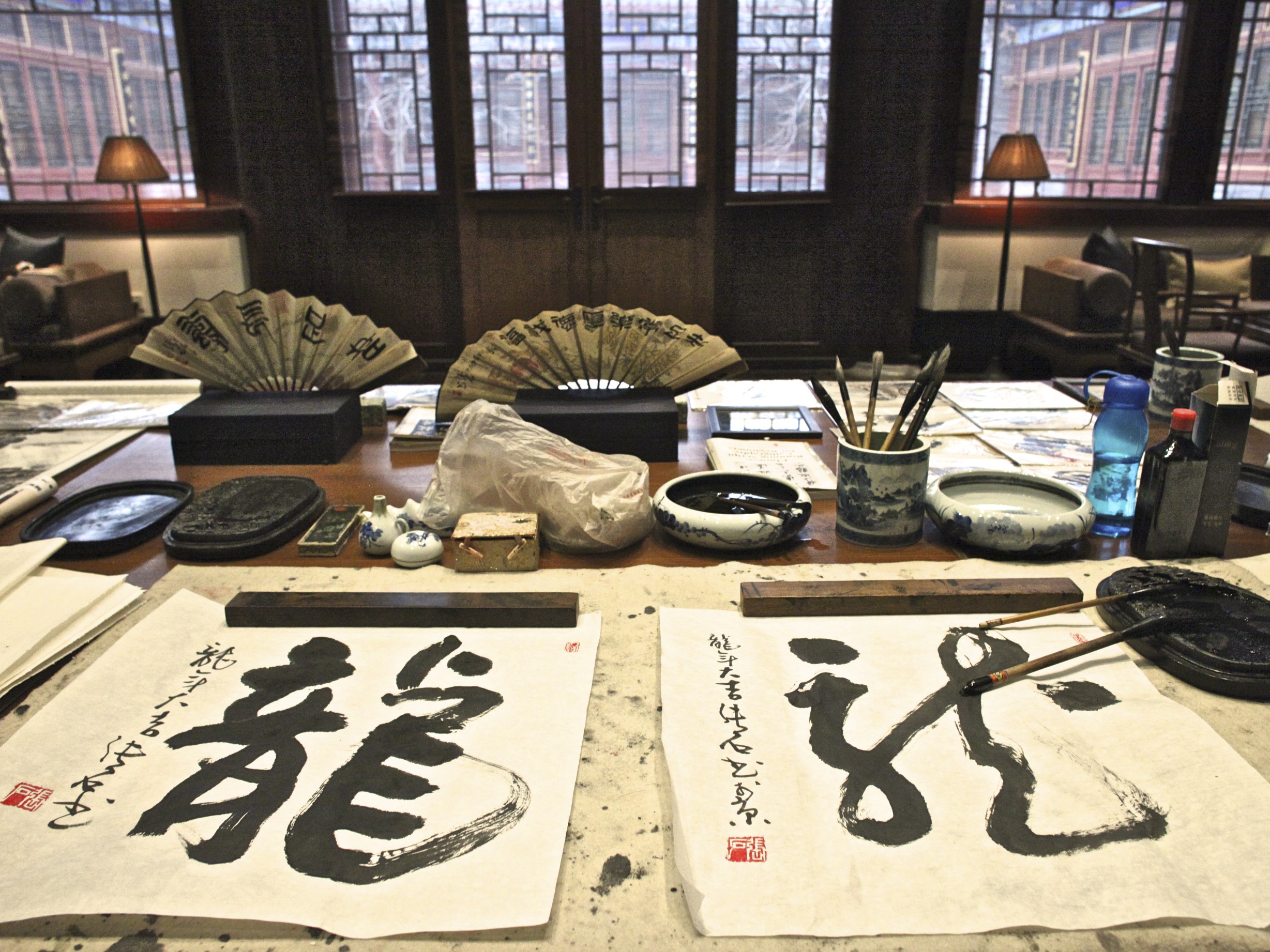It’s very cold outside and I would not mind stay in especially that I have heard every Wednesday here at the Aman Summer Palace in Beijing, a ver renowned calligraphy Master of beijing comes over to the resors at 4 PM teach guests the art of Chinese Calligraphy.
We are half hour early, I have done it in purpose so I can enjoy a cup of flower Jasmine tea at the sound of a lovely Chinese young musician playing gently a beautiful Chinese lute while admiring the small boutique items adjacent the large and magnificent library room.
Beijing’s finest craftsmen keep alive the city’s cultural heritage . At the small boutique one can admire master artisans imperial-style snuff-bottles, carved lacquer, bronze-ware, bows, tapestries, embroidery, shoes, miniatures that recreate the past, and toys such as traditional kites and delicate kongzhus (yoyo-like spool-shaped toys spun on lengths of string) -.
Chinese calligraphy is a form of calligraphy widely practiced and revered in the Sinosphere, which often includes China, Japan, Korea, and Vietnam. The East Asian calligraphic tradition originated and developed from China.
Chinese calligraphy and ink and wash painting are closely related, since they are accomplished using similar tools and techniques. Chinese painting and calligraphy distinguish themselves from other cultural arts because they emphasize motion and are charged with dynamic life. According to Stanley-Baker, “Calligraphy is sheer life experienced through energy in motion that is registered as traces on silk or paper, with time and rhythm in shifting space its main ingredients.”
The Master is not very talkative and slightly severe but this is a summery of what I have learned:
The ink brush, ink, paper, and inkstone are essential implements of East Asian calligraphy: they are known together as the Four Treasures of the Study in China. In addition to these four tools, desk pads and paperweights are also used by calligraphers.
Brush
Today, calligraphy may also be done using a pen, but pen calligraphy does not enjoy the same prestige as traditional brush calligraphy.
Paper
Paper nowadays is frequently sold together with a paperweight and desk pad.
- Special types of paper are used in East Asian calligraphy.In China, Xuanzhi , traditionally made in Anhui province, is the preferred type of paper. It is made from the Tatar wingceltis (Pteroceltis tatarianovii), as well as other materials including rice, the paper mulberry (Broussonetia papyrifera), bamboo, hemp, etc.
- Paperweights
Paperweights are used to hold down paper. A paperweight is often placed at the top of all but the largest pages to prevent slipping; for smaller pieces the left hand is also placed at the bottom of the page for support. Paperweights come in several types: some are oblong wooden blocks carved with calligraphic or pictorial designs; others are essentially small sculptures of people or animals. Like inkstones, paperweights are collectible works of art on their own right.
- Desk pads
The desk pad is a pad made of felt. Some are printed with grids on both sides, so that when it is placed under the translucent paper, it can be used as a guide to ensure correct placement and size of characters. However, these printed pads are used only by students. Both desk pads and the printed grids come in a variety of sizes.
Ink and Inkstink
Inkstone
Stone, ceramic, or clay from the banks of the Yellow River inkstone is used to grind the solid inkstick into liquid ink and to contain the ink once it is liquid. Chinese inkstones are highly prized as art objects and an extensive bibliography is dedicated to their history and appreciation, especially in China.
Seal and Seal paste
The shape, size, stretch and type of hair in the brush, the color and density of the ink, as well as the absorptive speed and surface texture of the paper are the main physical parameters influencing the final result. The calligrapher also influences the result by the quantity of ink/water he lets the brush take up, then by the pressure, inclination, and direction he gives to the brush, producing thinner or bolder strokes, and smooth or toothed borders. Eventually, the speed, acceleration and deceleration of the writer’s moves, turns, and crochets, and the stroke order give the “spirit” to the characters by influencing greatly their final shape.





































